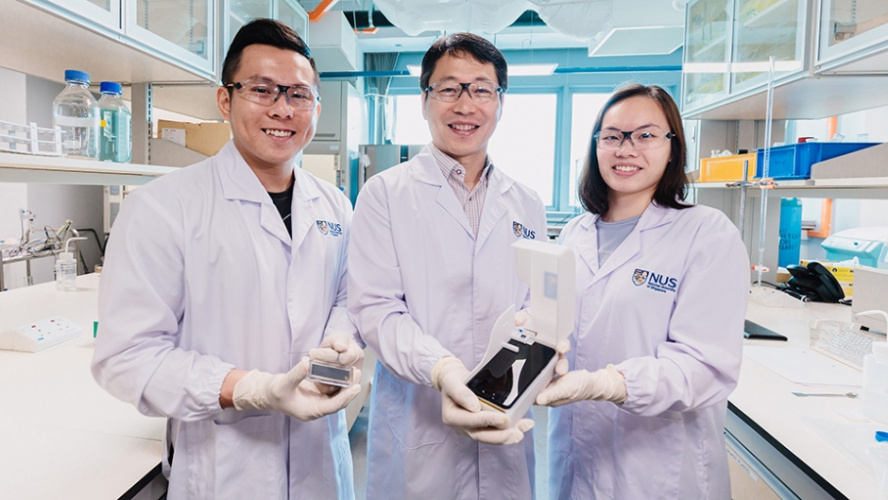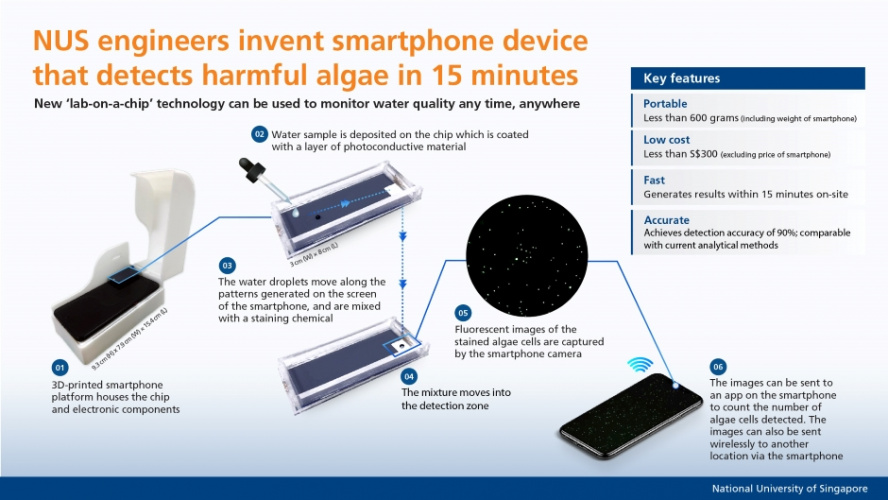
The breakthrough from the National University of Singapore (NUS) could help prevent the spread of harmful microorganisms in aquatic environments that threaten public health and cause environmental problems.
The NUS team, led by Assistant Professor Bae Sung Woo from the Department of Civil and Environmental Engineering at the NUS Faculty of Engineering, first published the results online in Harmful Algae.
A surge in the volume of algae and their associated toxins in lakes, ponds, rivers, and coastal waters can adversely affect water quality. In 2015, for example, an algae bloom wiped out over 500 tonnes of fish in Singapore.
Jellyfish inspire creation of water-resistant electronic skin
Singapore team develop world’s first PET aerogels from recycled plastics
According to NUS, conventional methods of algae detection and analysis are time consuming, and require specialised and costly equipment, plus skilled operators to conduct water sampling and testing. One approach is to test for the presence of chlorophyll using complex instruments that cost over S$3,000 (US$2,200). Another common method is to carry out cytometric and image analysis to detect algal cells, a method involving equipment that costs over S$100,000 (US$73,000).
“Currently, it can take a day or more to collect water samples from a site, bring them back to the laboratory for testing, and analyse the results. This long lead time is impractical for monitoring of algae blooms, as the management of contamination sources and affected waters could be slowed down,” Asst Prof Bae said in a statement.
The new NUS invention comprises a microfluidic chip, a smartphone, and a customisable 3D-printed platform that houses optical and electrical components such as a portable power source and an LED light.
The chip is first coated with titanium oxide phthalocyanine, a type of photoconductive polymer-based material that guides water droplets along the chip during the analysis process.

NUS add that the coated chip is then placed on top of the screen of a smartphone, which projects a pattern of light and dark regions onto the chip. When droplets of the water sample are deposited on the surface of the chip, a voltage drop difference, created by the light and dark areas illuminated on the photoconductive layer, modifies the surface tension of the water droplets. This causes the water droplets to move towards the dark illuminated areas. This movement simultaneously induces the water droplets to mix with a chemical that stains algae cells present in the water sample. The mixture is guided by the light patterns towards the camera of the smartphone.
Next, an LED light source and a green filter embedded in the 3D-printed platform, near the camera of the smartphone, create the conditions suitable for the camera to capture fluorescent images of the stained algae cells. The images can be sent to an app on the smartphone to count the number of algae cells present in the sample. The images can also be sent wirelessly to another location to quantify the number of algae cells. The entire analysis process can be completed within 15 minutes.
The device is said to cost under S$300 (US$220) - excluding the smartphone - and weighs less than 600g. In tests the new smartphone system was able to detect the four types of algae with an accuracy of 90 per cent.
The research team is currently in discussion with industry partners to commercialise their technology.




Labour pledge to tackle four key barriers in UK energy transition
I'm all for clarity and would welcome anyone who can enlighten me about what Labour's plans are for the size and scale of this Great British Energy....